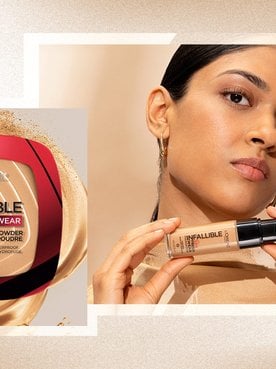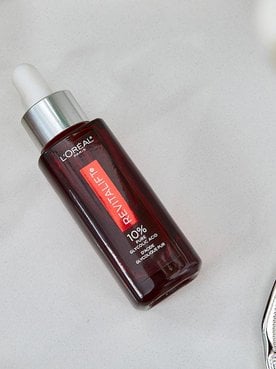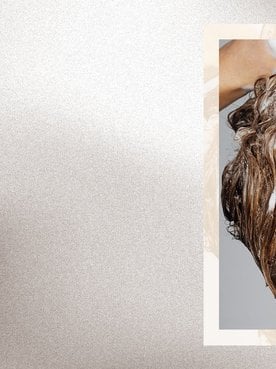Enim ad minim veniam
Detangling your hair might feel like a small part of your routine, but doing it correctly is key to maintaining healthy-looking strands. Choosing between a wide-tooth comb and a traditional brush can make a big difference in how your hair looks and feels—especially if it’s textured or prone to damage. Brushing with a standard tool can create friction and tugging, which often leads to breakage, particularly if your hair is already weakened from chemical processing or heat styling. That’s where the wide-tooth comb comes in. Swapping out your go-to brush for this simple (and often overlooked) tool can help keep your hair smooth, detangled, and protected from unnecessary damage. Ahead, we’ll break down the benefits of using a wide-tooth comb, when a brush may be better, and how to determine which tool is right for your routine.
Why Should I Use a Wide-Tooth Comb?
Switching to a wide-tooth comb may feel like a big change, especially if you love the speed of a hairbrush. But the benefits go beyond convenience. Using a comb vs. a brush can help improve the health of your hair and scalp, making your strands look and feel better over time. Here are the top reasons to embrace a wide-tooth comb.
Detangles without breakage
Hairbrushes can banish tangles quickly, but repeated pulling on stubborn knots can weaken strands and cause breakage over time, especially if your hair is already dry or chemically treated. Wide-tooth combs tend to be much gentler on the hair. The generous spacing between the comb’s teeth enables the tool to glide smoothly through the hair without snagging on knots. That’s why the American Academy of Dermatology (AAD) recommends using a wide-tooth comb over a standard hairbrush for everyday styling.
If breakage remains a concern, try adding the L’Oréal Paris EverPure Bond Repair Hair Oil-in-Serum to your styling routine. The lightweight formula helps reinforce weak hair bonds for stronger hair over time. It also protects against temperatures up to 450 degrees Fahrenheit, making it the ultimate multitasker in your styling routine.
Keeps waves and curls defined
Your hair type matters when deciding between a comb vs. a brush. Curly, wavy, or fragile hair types usually benefit more from the gentleness of a wide-tooth comb, which preserves curl patterns and reduces breakage. Brushing out your waves or curls can leave your hair looking poofy or frizzy. Detangling with a wide-tooth comb, meanwhile, allows for more control, and using one won’t disrupt your curl pattern the way a standard hairbrush might.
For extra help maintaining your curl definition, wash your hair with the L'Oréal Paris EverPure Sulfate-Free Curl Shampoo andL'Oréal Paris EverPure Sulfate-Free Curl Conditioner. The mild duo helps hydrate and nourish curls for soft, manageable hair.
Useful for creating sharp, precise parts
When it comes to creating parts or pulling your hair into a sleek style, a wide-tooth comb really comes through. In the comb vs. brush conversation, the comb is the tool that gives you cleaner, more precise sections. Whether you’re after a sharp middle part, a fun zigzag, or just need accuracy for an updo, using a wide-tooth comb keeps things neat and feels gentler than brushing.
Wide-tooth combs are easy to clean
Brush bristles can easily trap dirt, oil, and leftover styling products, which build up over time and weigh down your hair, leaving it looking greasy or dull. Wide-tooth combs are much simpler to clean—just a quick rinse between detangling sessions can keep them fresh. Keeping your comb clean means your hair stays lighter, shinier, and free from weighty buildup that can interfere with your style.
Gentle on the scalp
Brush bristles can sometimes scratch the scalp and hold onto dirt or styling residue, which may cause irritation and dryness. A wide-tooth comb is much gentler, gliding across the scalp without that harsh scraping feeling. It also helps lightly massage the area, boosting circulation and encouraging a healthier-looking scalp and hair over time.
Daily care for damaged strands
If your hair is bleached, processed, or split at the ends, brushing can be the final straw that leads to more breakage. A wide-tooth comb glides through your hair without the harsh tugging, making it ideal for fragile strands.
To protect your hair against future damage, deep condition once weekly before detangling. We love the L'Oréal Paris Elvive Total Repair 5 Damage-Erasing Balm, a rich, rinse-out mask that helps address five visible signs of damage: split ends, weakness, rough texture, dullness, and dehydration.
Why Should I Use a Hair Brush?
Even though a wide-tooth comb has plenty of benefits, brushes have their place in your hair routine, too. They offer unique styling and maintenance perks that a comb can’t replace. Here are a few benefits of brushing your hair with a standard brush.
Distributes natural oils from scalp to ends
Brushing your hair can help carry the natural oils from your scalp all the way down your strands, distributing that built‑in moisture evenly. When thinking about brushing hair vs. combing, this is one area where the brush wins, helping to boost smoothness and shine.
To make your hair even smoother (and easier to detangle), add the L'Oréal Paris EverPure Sulfate-Free Glossing 5-Min Lamination Hair Mask to your routine once a week. The glycolic acid-powered mask smooths, softens, and adds shine—all without weighing the hair down.

Smooths hair for polished styles
When you’re going for a sleek, styled look, a brush can be your best friend. Using one can help smooth the surface of your hair, tame flyaways, and give your look a polished finish. In the brush vs. comb conversation, this is where the brush clearly shines—perfect for blowouts, slicked-back buns, and any style that needs a smooth, refined touch.
If you’re prone to frizz and flyaways and want to keep your style looking sleek all day, prep your mane with the L’Oréal Paris Elnett Anti-Frizz Slick Back Hair Styling Cream, which provides up to 24 hours of frizz control and flexible, reworkable hold.
Adds volume and shine
Brushes can lift roots and add body, creating volume and bounce that combs can’t provide, which makes them stand out in the comb vs. brush debate. To really boost this effect, apply theL'Oréal Paris Advanced Hairstyle BOOST IT Volume Inject Mousse before styling. This lightweight mousse provides long-lasting hold, adds thickness without stiffness, and gives hair that full, bouncy finish.
When To Choose a Wide-Tooth Comb Over a Brush
Sometimes it’s not just about choosing brush vs. comb, but about knowing which tool makes the most sense for the moment. Here’s when a wide-tooth comb really earns its place in your routine:
Post-shower detangling
Wet hair is at its most fragile, and this is where a wide-tooth comb is essential. It glides gently through damp strands, easing out knots without pulling or snapping them. Using one to detangle just-washed hair can help remove knots and snags without damaging your strands, keeping your hair healthier in the long run.
Prepping hair for heat styling
Before you grab your blow dryer or hot tools, use a wide-tooth comb to spread leave-in products, heat protectants, or styling creams evenly from root to tip. This can help prevent buildup that can make your hair look limp, greasy, or weighed down and ensure each strand is coated evenly for a flawless-looking finish.
Protecting fragile or damaged hair
If your hair is already weak, over-processed, or prone to breakage, brushing can make things worse. A wide-tooth comb is much gentler, smoothing your hair without putting extra stress on the strands. It’s the tool to reach for when you want to protect delicate hair while still keeping it manageable and tangle-free.
When To Choose a Brush Over a Wide-Tooth Comb
On the flip side, there are moments when a brush works better than a comb, especially when your goal is to create a sleek finish or enhance volume.
Creating sleek, styled looks
For slick, polished styles, brushes are unbeatable. They can help smooth down flyaways and give hair that refined finish that a comb just can’t achieve. For a smooth, frizz-free look, reach for a boar bristle brush rather than one with plastic bristles—they’re the gold standard in achieving sleek, polished hairstyles.
Adding volume or waves
Round brushes are especially good at lifting roots and creating waves or curls when paired with a blow dryer. Unlike a wide-tooth comb, a brush can add fullness and bounce, making it a clear winner in the comb vs. brush debate when your style calls for volume. If you need help maintaining your voluminous style after brushing out your hair, give your mane a light mist with the L’Oréal Paris Elnett Satin Extra Strong Hold Hairspray. It provides lightweight, brushable hold with a soft—not crunchy or sticky—finish.
How To Combine Both Tools in Your Hair Routine
You don’t have to choose between a comb or a brush exclusively—both can play an important role in your daily routine. Using them strategically gives you the best of both worlds and helps you adapt your routine to what your hair needs that day.
1. Wash and condition your hair
Smooth, tangle-free hair is always the easiest to comb, and achieving that starts with your shampoo and conditioner. If breakage and damage are your biggest hair concerns, we recommend the L’Oréal Paris EverPure Sulfate-Free Bond Strengthening Shampoo and the L’Oréal Paris EverPure Sulfate-Free Bond Strengthening Conditioner.
This reparative system helps to strengthen hair inside and out by reinforcing weak hair bonds. After each wash, your hair will be noticeably smoother and softer, ideal for combing and easy styling.

2. Apply a nourishing leave-in
Once you exit the shower, lightly blot your hair with a clean towel, then spritz a hydrating leave-in throughout your mane to help smooth your strands and assist in detangling. We recommend reaching for the L'Oréal Paris EverPure Sulfate-Free Moisture 21-in-1 Leave-In Conditioner. The hydrating formula will help smooth your hair, assist in detangling, and give your strands healthy-looking luster. Once your hair is prepped, use your comb to detangle your hair section by section until all of the knots are gone.

3. Dry and style your hair
After detangling your hair, you can style it as usual. Use a brush to smooth your hair while drying, create volume, or coax your hair into a specific hairstyle. You can also brush your hair after styling to smooth your strands, add shine, and ensure you’re left with a silky, glossy finish.
Next Up: Hair SOS: 11 Ways To Fix Your Damaged Hair
Photo courtesy of L’Oréal Paris







